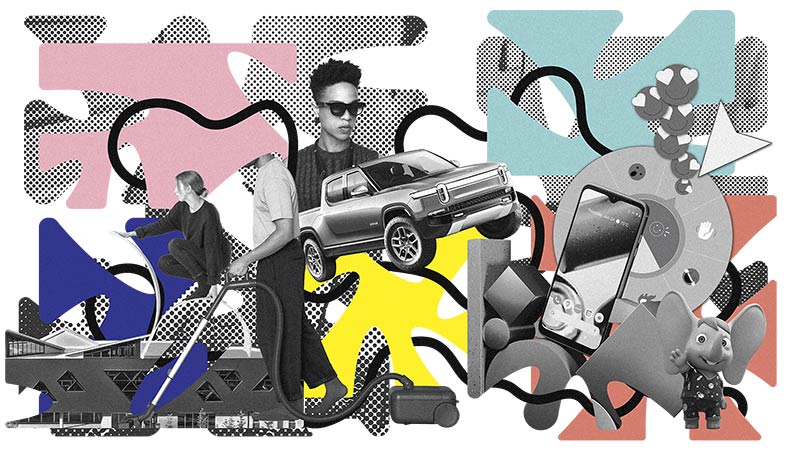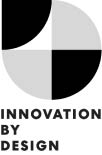Fast Company: See the Incredible Honorees of the 2022 Innovation by Design Awards
September 20, 2022

We are syndicating the
original article from
Fast Company.
See the 600+ honorees who are creating products, reimagining spaces, and working to design a better world.

Tomorrow will be better than today, capitalism promises us. Whether it’s the release of another iteration of the iPhone or a wave of COVID-19 vaccines formulated to keep up with emerging variants, the prospect of the next big thing provides us with an alluring sense of optimism. But it’s also turned us into short-term thinkers awaiting our next fix, at the expense of the environment and social equity.
The 46 winners of this year’s Innovation by Design Awards—chosen by Fast Company editors, alongside an expert jury of design professionals—represent an alternative to the “what’s next?” design strategy, trading short-term solutionism for long-term, considered thinking.
Take the
Fairphone 4. It’s a smartphone that you can disassemble with a standard screwdriver to fix or upgrade by yourself. Yes, its form is an alluring Scandinavian design, but it also acknowledges our right to repair products rather than reflexively replace them. Over at
Waymo, Google’s autonomous car company, the hardware includes 40 cameras and other self-driving components that can be easily swapped out for repair or upgrades. Fairphone and Waymo aren’t building their products simply to be “environmentally friendly,” but to operate with graceful longevity—just as the
Clayton Community Centre in British Columbia will cool itself without air-conditioning for decades to come, thanks to efficient windows that open automatically and a shaded, canopylike design.
We can’t fix our future without reconciling our past, and the design industry is slowly making progress on addressing a century of failure in diversity and inclusion. We see this in projects ranging from India’s
iKure Health Hub, which embraces regional architecture while leveraging AI to create new building forms, to a set of fonts built specifically
to help Indigenous Canadians correctly render their languages on screens for the first time. Big companies are acknowledging their own lack of representation as well. At Nike, Serena Williams created an
annual apprenticeship program that helps designers of color break into the industry. Furniture company MillerKnoll launched an initiative called
Diversity in Design that gathers dozens of companies to train the next generation of high school students to become the diverse designers of tomorrow—the true next big thing.
See
the complete list of winners.

original article from
Fast Company.
See the 600+ honorees who are creating products, reimagining spaces, and working to design a better world.
Tomorrow will be better than today, capitalism promises us. Whether it’s the release of another iteration of the iPhone or a wave of COVID-19 vaccines formulated to keep up with emerging variants, the prospect of the next big thing provides us with an alluring sense of optimism. But it’s also turned us into short-term thinkers awaiting our next fix, at the expense of the environment and social equity.
The 46 winners of this year’s Innovation by Design Awards—chosen by Fast Company editors, alongside an expert jury of design professionals—represent an alternative to the “what’s next?” design strategy, trading short-term solutionism for long-term, considered thinking.
Take the
Fairphone 4. It’s a smartphone that you can disassemble with a standard screwdriver to fix or upgrade by yourself. Yes, its form is an alluring Scandinavian design, but it also acknowledges our right to repair products rather than reflexively replace them. Over at
Waymo, Google’s autonomous car company, the hardware includes 40 cameras and other self-driving components that can be easily swapped out for repair or upgrades. Fairphone and Waymo aren’t building their products simply to be “environmentally friendly,” but to operate with graceful longevity—just as the
Clayton Community Centre in British Columbia will cool itself without air-conditioning for decades to come, thanks to efficient windows that open automatically and a shaded, canopylike design.
We can’t fix our future without reconciling our past, and the design industry is slowly making progress on addressing a century of failure in diversity and inclusion. We see this in projects ranging from India’s
iKure Health Hub, which embraces regional architecture while leveraging AI to create new building forms, to a set of fonts built specifically
to help Indigenous Canadians correctly render their languages on screens for the first time. Big companies are acknowledging their own lack of representation as well. At Nike, Serena Williams created an
annual apprenticeship program that helps designers of color break into the industry. Furniture company MillerKnoll launched an initiative called
Diversity in Design that gathers dozens of companies to train the next generation of high school students to become the diverse designers of tomorrow—the true next big thing.
See
the complete list of winners.
